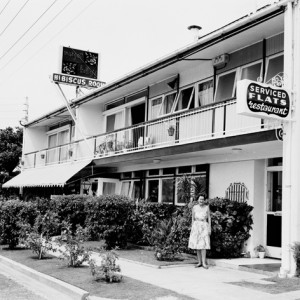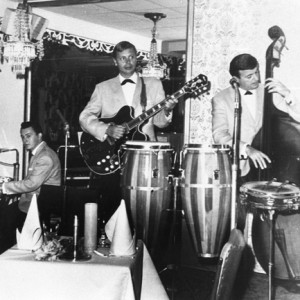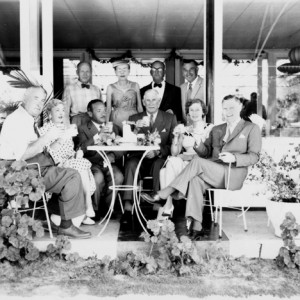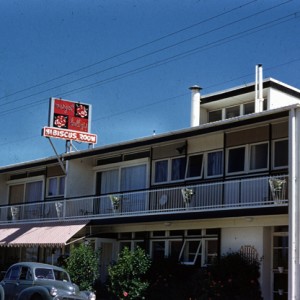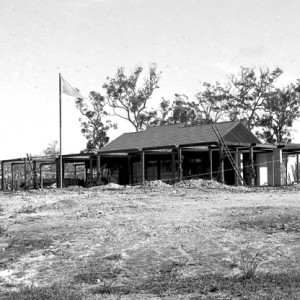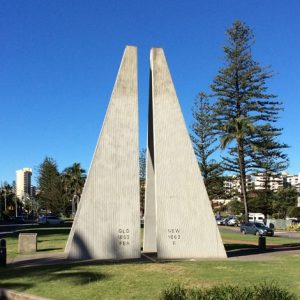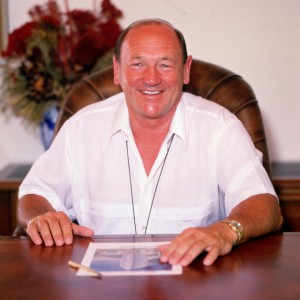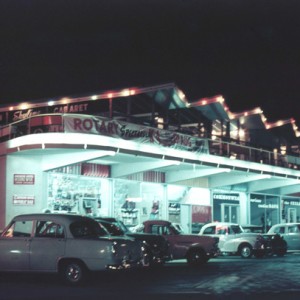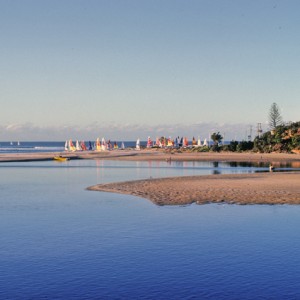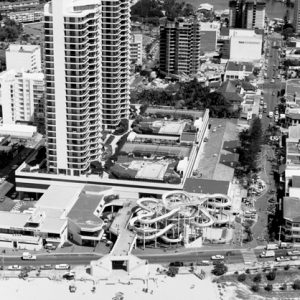
Margot Emerson never revealed her date of birth but her first job was as an apprentice dressmaker in a department store in Brisbane’s Fortitude Valley. At night she studied millinery, fashion and cooking and, following her marriage to Edward Kelly, the licensee of the Charleville Hotel, she moved to Charleville and became admired for her love of people from all walks in life.
In addition to the Charleville Hotel, the Kelly’s took over the National Hotel in Brisbane where troops and returned servicemen were always welcome and given special meals. In later years they managed the Pacific Hotel in Southport, which later became the site of Australia Fair Shopping Centre.
Despite her success at the hotels she managed with her husband, Margot Kelly’s name is synonymous with the Hibiscus Room and her love of the flower predated the restaurant. In 1940 she was described entering the Pacific Hotel as “… wearing bud pink linen with a pale pink hibiscus tucked in her dark hair, and carrying a bunch of darker red hibiscus, she looked like a bridesmaid.” (Sunday Mail, 22 Dec 1940, p. 16)
When Edward Kelly died in 1949, Margot moved to Surfers Paradise where they had a home on the Esplanade. In 1954 she built the Hibiscus Room on a site she owned in Hanlan Street, Surfers Paradise and created one of the most popular and long lasting entertainment venues on the Gold Coast.
- Margot Kelly at the Hibiscus Room, 1960. Photographer Bob Avery
- Musicians at Margot Kelly’s, circa 1966. Photographer N Jordan
- Guests at the Hibiscus Room, 1957. Photographer Alexander McRobbie
- Margot Kelly’s Hibiscus Restaurant, 1958. Photographer Arthur Leebold
The elegant restaurant she built was a magnet for people including “…politicians, diplomats, film stars, princes, playboys and ordinary every-day citizens…” (Dwyer, John, 1983). Margot offered a unique experience that combined fine dining under chandeliers, elegant fashion and luxurious décor.
The Hibiscus Room was the setting for countless celebrations including 21st birthdays and engagement parties over its 26 years of operation. A variety of entertainers regularly performed and Margot herself often sang at the piano with guests.
After many years of entertaining visitors and residents on the Gold Coast, the decision to close the Hibiscus Room was made and an auction to sell the contents took place. Many people attended hoping to get a small memento.
In 1980 the building was demolished to make way for the Beachcomber high rise. In April 1983 Margot was presented with the Surfers Paradise Chamber of Commerce Community Achievement Award with 22 others at the 50th birthday celebrations of Surfers Paradise at the Chevron Hotel. It was her last public appearance before passing away in late 1983.
Sources of information and further reading
- “Margot Kelly: a legend on the Gold Coast.” The Australian Women’s Weekly (1933 – 1982) 20 Oct 1971: 18. http://nla.gov.au/nla.news-article43201756
- “Beside the Sea.” Sunday Mail (Brisbane) (Qld. : 1926 – 1954) 22 Dec 1940: 16. http://nla.gov.au/nla.news-article97875322
- Dwyer, John. “Legend of love left behind by Margot.” The Gold Coast Bulletin, 7 Oct 1983, p. 4
- “Margot Kelly.” The Gold Coast Bulletin, 5 Oct 1983, p. 7.
- “Coast mourns the legendary Margot Kelly.” The Gold Coast Bulletin, 28 Sep 1983.
